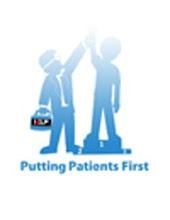Introduction to Physiotherapy
What is Physiotherapy?
Physiotherapy is also known as physical therapy and is a form of treatment that focuses on helping individuals to rebuild maximum movement and functional ability, typically after any medical event or chronic disorder that reduces the physical capacity of the individual.
It is primarily concerned with identifying and maximizing quality of life by prevention of a more serious complication, treatment/intervention during an illness, or rehabilitation after the event.
Where is Physiotherapy commonly used?
• As mentioned above, the role of physiotherapy may be preventive, remedial or therapeutic, or rehabilitative after the illness.
• Physiotherapy usually comprises many patterns and sets of exercises involving various functions of the body which can be physical movements of the body, or internal body functions like cardiac function, breathing, etc.
• These help to restore the functionality and strength of these parts of the body, typically after having been subjected to a medical disorder that reduces their capacity.
• In some cases however, physiotherapy has an important preventive role to play, such that more important complications involving other organs, can be avoided by early mobilizing or giving physiotherapy to the patient. For example use of physiotherapy in prevention of deep vein thrombosis in the legs of patients who are likely to be bedridden for prolonged periods.
• Another example is to maximize potential in an otherwise normal body, or to make it more enduring for strenuous activities while preventing injury to the muscles, like is commonly used in sportsmen.
Who can give Physiotherapy to a patient?
• Whether the patient will need or benefit from physiotherapy is a decision to be taken by the doctors and other specialists under whose treatment the patient is. This is done with the help of individual history and physical examination to arrive at a diagnosis, establish a management plan, and when necessary, incorporate the results of laboratory and imaging studies.
• In cases of sports and other activities too, specialists trained in sports medicine will help decide course of treatment for the individuals.
• Once the decision is made, trained physiotherapists can offer therapy in many settings, such as OPDs of major hospitals, within wards for admitted patients, patient’s own homes, schools and colleges, fitness centers and sports training facilities.
Specialty areas in Physiotherapy
1. Cardiopulmonary
These specialists treat individuals with cardiopulmonary (heart and lung) disorders or those who have had cardiac or pulmonary surgery. The main aim is to improve the capacity of cardiac strength as well as respiratory function. It is commonly utilized to assist in clearing lung secretions experienced with cystic fibrosis, and cardiac rehabilitation for patients of heart attacks, post coronary bypass surgery, chronic obstructive pulmonary disease, etc
2. Geriatric
Geriatric physical therapy focuses on conditions commonly affecting older adults like arthritis, osteoporosis, cancer, Alzheimer's disease, hip and joint replacement, balance disorders, incontinence, etc. It also helps those affected by such problems in developing a specialized program to help restore mobility, reduce pain, and increase fitness levels.
3. Neurological
Neurological physical therapy is a discipline working with individuals who either have an ongoing neurological disorder like Alzheimer’s, Parkinson’s disease, or have suffered some irreversible effects of an acute episode like that of stroke or neurological injury. Therapists generally work on areas of dysfunction like paralysis, vision impairment, poor balance, inability to ambulate, and loss of functional independence.
4. Orthopaedic
Orthopaedic physical therapists are involved in diagnosis, management as well as rehabilitation of patients with orthopaedic problems. They are trained in the treatment of post-operative orthopaedic procedures, fractures, acute sports injuries, arthritis, sprains, strains, back and neck pain, spinal conditions and amputations. Treatments like joint and spine mobilization/manipulation, therapeutic exercise, neuromuscular reeducation, hot/cold packs, and electrical stimulation are often used to hasten recovery. Orthopaedic physiotherapy also helps those who have suffered injury or disease affecting the muscles, bones, ligaments, or tendons of the body to evaluate long term effects, and lifestyle changes needed after injury.
5. Paediatric
Paediatric physiotherapy is typically involved in diagnosis, treatment, and management of infants, children, and adolescents with a variety of congenital, developmental, neuromuscular, skeletal, or acquired disorders/diseases. These disorders usually have lifelong effects on physical growth and activity and treatments focus on improving gross and fine motor skills, balance and coordination, strength and endurance as well as cognitive and sensory processing/integration. Children with developmental delays, cerebral palsy, spina bifida, or torticollis, also can benefit from treatment by paediatric physical therapists.
6. Integumentary
This basically means treatment of conditions involving the skin and related organs which commonly occurs in cases of wounds and burns. Physical therapists utilize surgical instruments, mechanical lavage, dressings and topical agents to scrape necrotic tissue and promote tissue healing. Other commonly used interventions include exercise, edema control, splinting, and compression garments.
Subscribe to:
Post Comments (Atom)



No comments:
Post a Comment